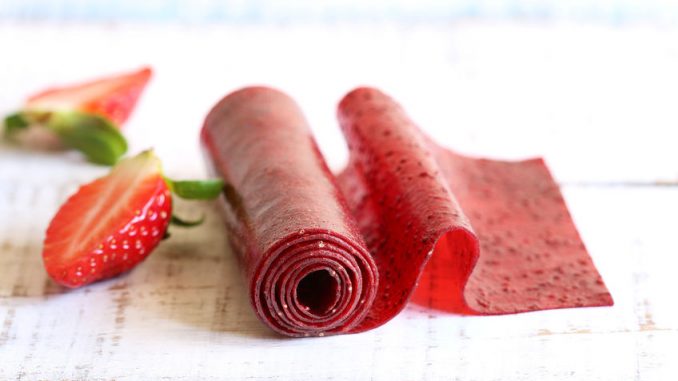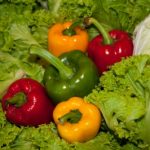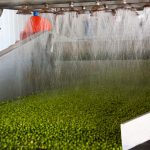
The fruit leather is an easy way to turn fruit puree into a stable product which appeals to children and adults alike. In the Middle East and Turkey, fruit leathers are are often made from various fruits and indeed vegetables where they are dried under the sun.
Pestil is perhaps one of the most famous types from Turkey. It is often made from regional fruit including the mulberry
Preparation Of Fruit Leather
- Take a shallow tray such as one used for biscuits and cookies. Line it with a plastic wrap and secure firmly to the edges. Do not use aluminium foil or wax paper as any fruit sticks to it and it simply wont come off.
- Take clean fruit. Wash and remove the core. The fruit is then pureed with or without its skin.
- Blend the fruit to a smooth consistency. Some fruits may need some cooking beforehand to obtain a puree of the correct consistency.
- Add flavourings, colours, spices etc. at this point.
- With the puree as a smooth but thick liquid, pour onto the tray. Spread evenly to a maximum thickness of 1/4″ thickness.
- Leave the puree as a flat puddle with about 1 inch from the sides so that it can spread out during heating. It also helps with removal of the plastic wrap.
- Dry the fruit leather by either placing in the oven at 140 to 150 Fahrenheit/50 Centigrade. It takes about 12 to 15 hours for reasonable dryness depending on the thickness of the fruit.
- Dry until the leather is rubbery or pliable. The centre should be the main test point as this drys out the slowest usually because of its thickness.
- Peel away the plastic wrap whilst it is still warm. Roll up the leather because when it is hot it does not roll easily.
- Store in an airtight container.
Preparing A Strawberry Fruit Leather
A typical strawberry leather is prepared using 300g of apple which is peeled and cored, 500g of strawberries with stalks removed and 1 tsp of rapeseed oil. In this example, it is best to heat all the fruit together and cook in a pan over a medium heat for about 10 minutes so that the whole fruit mix softens. When the pulp is cool enough, push it all through a sieve. Prepare the fruit leather as per the basic recipe above.
Preparing A Pear fruit Leather
Heat a mixture of pear juice pulp or pear juice concentrate. To obtain any consistency, add pectin to about 1 per cent and some corn syrup (5 per cent) for some sweetness. In this case, dry at 70°C for 8 to 10 hours. It should turn a pale brown.
Research
Fruit leathers are often used as vehicles for extending the shelf-life of fruit. It is a great way of using surplus and whilst it might not be great for teeth, fruit leather is still popular with children. A wide variety of fruits can be used including mulberry, persimmon, papaya etc.
In terms of research it is worth checking out some of the sensory properties that were identified to making a good fruit leather when a pear fruit leather was tested with consumers (Huang & Hsieh, 2006).
Pectin is usually the most important ingredient in leathers that require a slightly more rubbery and pliable texture. It also adds some firmness without making the product brittle.
References
Huang, X., Hsieh, F-H. (2006) Physical properties, sensory attributes, and consumer preference of pear fruit leather. J. Food Sci., 70 (3) (Article)



I followed your preparation instructions and the fruit leather truly works. Really good idea because I am already getting excess soft fruit.